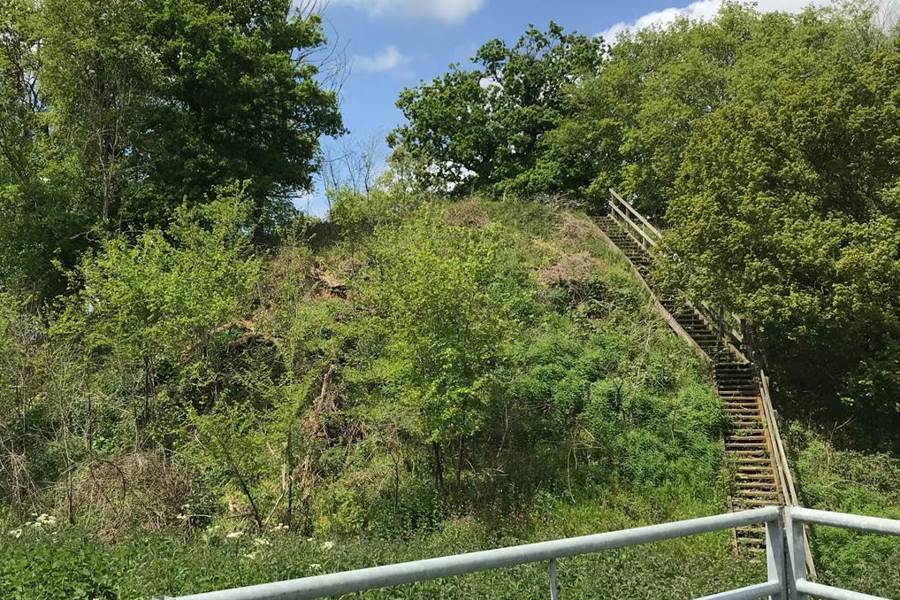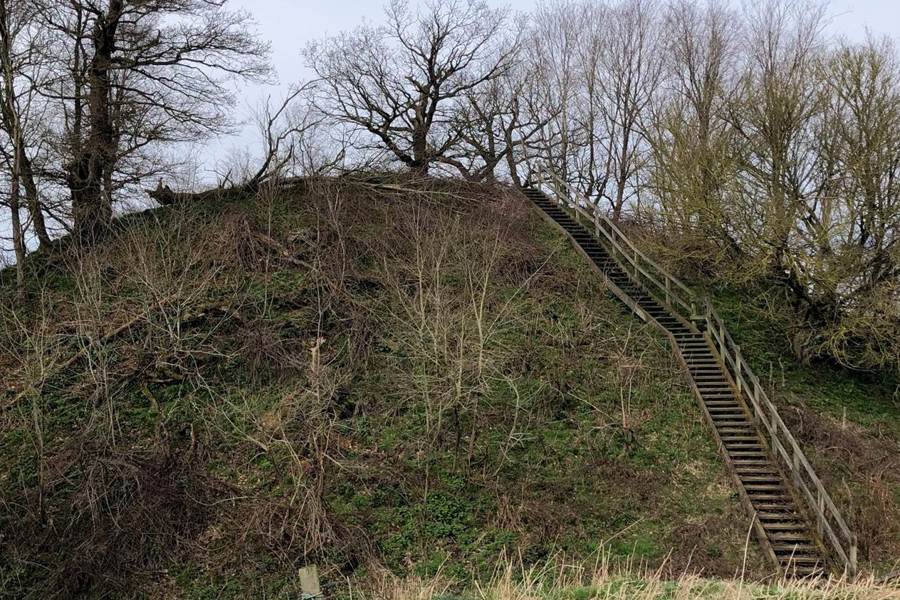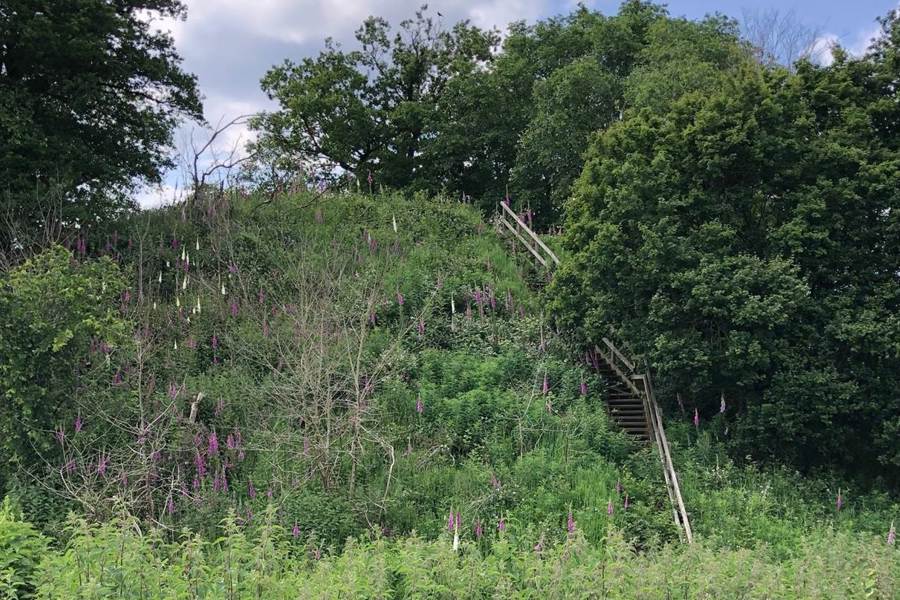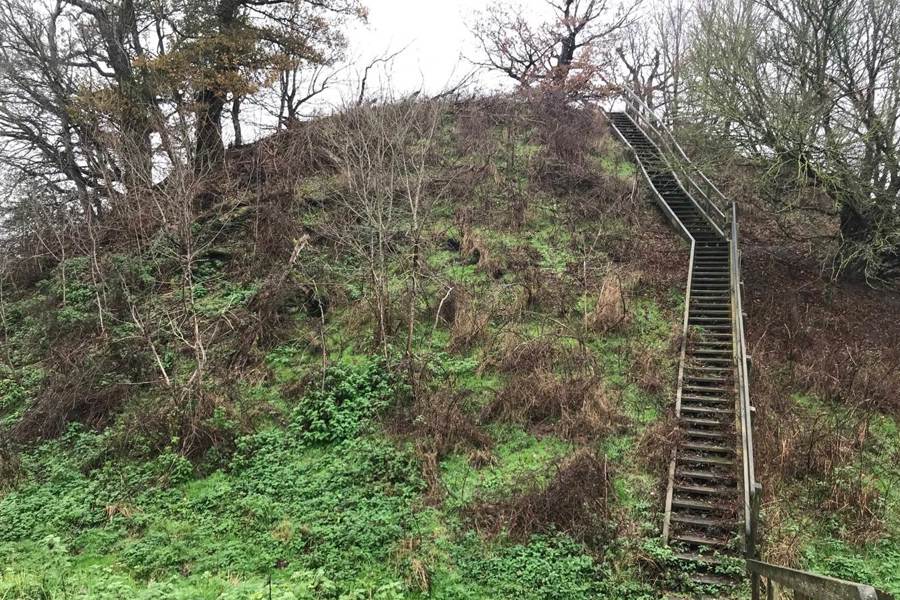Scrub removal at Mount Bures
The Challenge
Legacy Grazing begun managing Mount Bures Scheduled Monument in North Essex in 2021. Working with the landowner, Historic England and Natural England a Countryside Stewardship higher-tier agreement was secured to help restore the Mount and enhance the biodiversity of the surrounding grasslands.
The monument includes Castle Mound (The Mound), the earthworks of a motte castle situated on high ground. The motte survives to a height of circa.10m high and is 60m in diameter and surrounded by a ditch.
Motte castles are medieval fortifications introduced to Britain by the Normans. They comprised a large conical mound of earth or rubble, the motte, surmounted by a palisade and a stone or timber tower. The castle is believed to have been built during the reign of either King Stephen or Henry I.
The Mound is well preserved and archaeological excavation has shown that it retains evidence pertaining to the occupation of the site and environmental information relating to the economy of its inhabitants and the landscape in which they lived..
However, root penetration from woody growth on the Mound was damaging the monument, and the removal of scrub and young trees was considered a conservation priority. Vegetation present included a dense covering of bramble with frequent elm and English oak standards.
Given the steep slopes, mechanical clearance was considered too hazardous and could be damaging to the monument itself. Therefore, a more sensitive approach was required, and goats appeared to be a logical choice given their ability to browse woody vegetation and to ring-bark trees.
The Results
In the summer of 2021 four native breed Cheviot Goats were introduced on to the Mount in a fenced enclosure 0.5 hectares in size. An existing fence was already present to exclude badgers, whose digging activity had been damaging the Mound. An electrified top wire, powered by a solar energiser, was added to the fence to further discourage the goats from leaving the Mound.
The presence of bluebells meant that goats had to be introduced after its leaves had disappeared due to their toxicity to livestock - typically around June. The goats then remain until winter, when they are removed from site. It is important that the goats are continuously present during the growing season for several years as any lengthy period of absence allows bramble and other woody vegetation to regrow before they are killed.
By 2025, following four years of browsing by the goats, much of the bramble was dead or dying, and all but the largest elms had been ring-barked. However, the oak trees were relatively untouched As the Mound becomes more open, and grassland establishes where there was once bramble, we will monitor the impact of the goats and may look to replace them with native breed Dorset Down sheep who are more effective at maintaining short grass.




